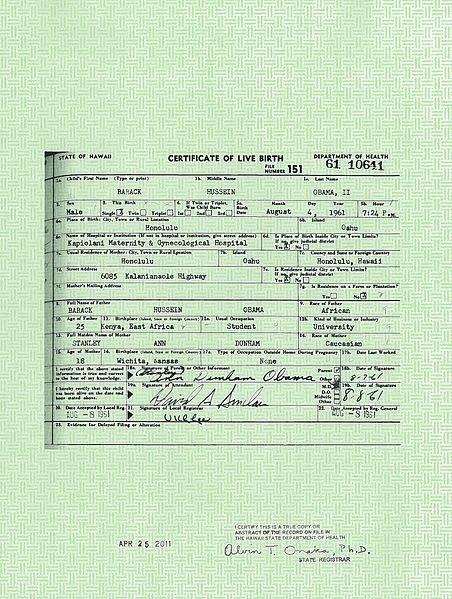Exposure to media that promotes
conspiracy theories may increase belief in them, but exposure to
debunking information can decrease that belief, a
new study has found.
The report, published in the
January-March edition of the journal Communication Quarterly
and conducted by researchers at the University of Missouri and
Indiana University-Purdue University Columbus, suggests that messages
can influence peoples' beliefs, even in a fragmented media world.
Researchers conducted two experiments.
In the first, subjects learned about the “Birther” conspiracy
suggesting that president Barack Obama is not a legitimate U.S.
citizen and therefore does not qualify for the presidency.
In the second, subjects were exposed to
the “Truther” conspiracy, which alleges that the administration
of former president George W. Bush was involved in producing or
abetting the terrorist attacks of Sept. 11, 2001.
Why use these two conspiracies? Because
of their political implications. People tend to adopt conspiracy
theories because
they feel marginalized by the existing political order. Though
the spread of conspiracies does not always fall along partisan lines,
the Birther movement has mostly been taken up by the political right,
while the Truther movement emerged originally from the left.
Barack Obama's long-form birth certificate. Courtesy of whitehouse.gov.
Participants in both experiments were
divided into three subgroups: one that was exposed only to messages
that confirmed the conspiracy theory, one that was exposed to both
confirming and debunking messages, and a control group that was given
totally unrelated material to watch or read. All of the groups were
asked about their level of belief in various aspects of the
conspiracy theories beforehand and afterward.
The results were a bit of a mixed bag.
As expected, belief in the Birther conspiracy rose among those
exposed only to confirming information, while it fell significantly
for everyone else.
But things were a bit different with
the Truther conspiracy. In that experiment, all three groups showed a
marked increase in belief; even the control group experienced
a slight uptick.
Perhaps even more interesting was that
the changes in peoples' opinions weren't affected by party
affiliation, as one might presume from the nature of the
conspiracies. Republicans and Democrats were both as likely to
believe (or disbelieve) a given conspiracy theory based solely on
which experimental condition they happened to be placed into.
Minimal Media Effects?
Since the early 1900's, communication
scholars have proposed a slew of hypothesis to explain how mass media
influence populations. One of the earlier models is known as the
“minimal-effects” model. It is basically what it sounds like:
people make their own decisions about what to believe, and mass media
have little influence over those decisions.
The minimal-effects model was largely
abandoned as more nuanced explanations came along. Over the last few
years, though, it
has seen a resurgence because of the changing media landscape
brought on largely by the Internet.
In today's environment, the argument
goes, people can choose to watch, read and listen to messages
tailored to their interests and values. There is so much selection,
in fact, that a person can wrap herself in a cocoon of media that
rarely challenges her beliefs. You may have heard this described as
the “echo chamber,” a room in which the only thing you can hear
is your own voice bouncing back at you.
To be sure, the minimal-effects model
doesn't posit that a person will never encounter any dissenting
messages. Rather, it proposes that she will be “more attuned to
resisting any messages that prove discrepant.”
The Communication Quarterly
study, however, adds to the challenges for modern minimal-effects
proponents. After all, if peoples' preexisting positions led them to
resist media messages, then there should have been major differences
in how Republicans and Democrats reacted to the Birther and Truther
conspiracy theories and the debunking evidence. Yet both parties were
equally influenced by the messages.
The authors do note one particular
weakness to their experiment: the participants were a median age of
about 21 years old in the Birther group, and about 19 years old in
the Truther group. Since young people tend not to be as strongly tied
to political affiliations or ideas as older people are, it's
difficult to extrapolate the strong influences seen here to all of
society. The authors admit that “the finding that prior political
affiliation does not moderate the media effect may be a product of a
sample with attitudes that are more malleable than the general
public.”
More confusing still may be what this
study means for science communicators and others seeking to debunk
false or misleading claims with evidence. Although the subjects
exposed to evidence against the Truther conspiracy were less liable
to be convinced by the theory than those who only received
pro-Truther messages, the fact remains that both groups increased in
their buy-in of the conspiracy overall.
The researchers write that this could
have had something to do with the specific presentation of the
counterarguments, which were given in the form of a Popular Mechanics
article. “Perhaps a more sophisticated audience taking more time to
carefully consider the evidence would have found the debunking
evidence more persuasive,” they write.
Perhaps. Even so, is it likely that
media consumers are on the whole “more sophisticated,” or that
they would take the necessary time and care? On the other hand, could
the fact that counterarguments to conspiracies did have an effect in
both experiments mean that debunking efforts, even if not perfectly
effectual, are nevertheless a worthwhile cause?
The answers to these and other
questions may have profound implications for the effectiveness of
science communicators as they craft messages for both public
officials and general audiences.



